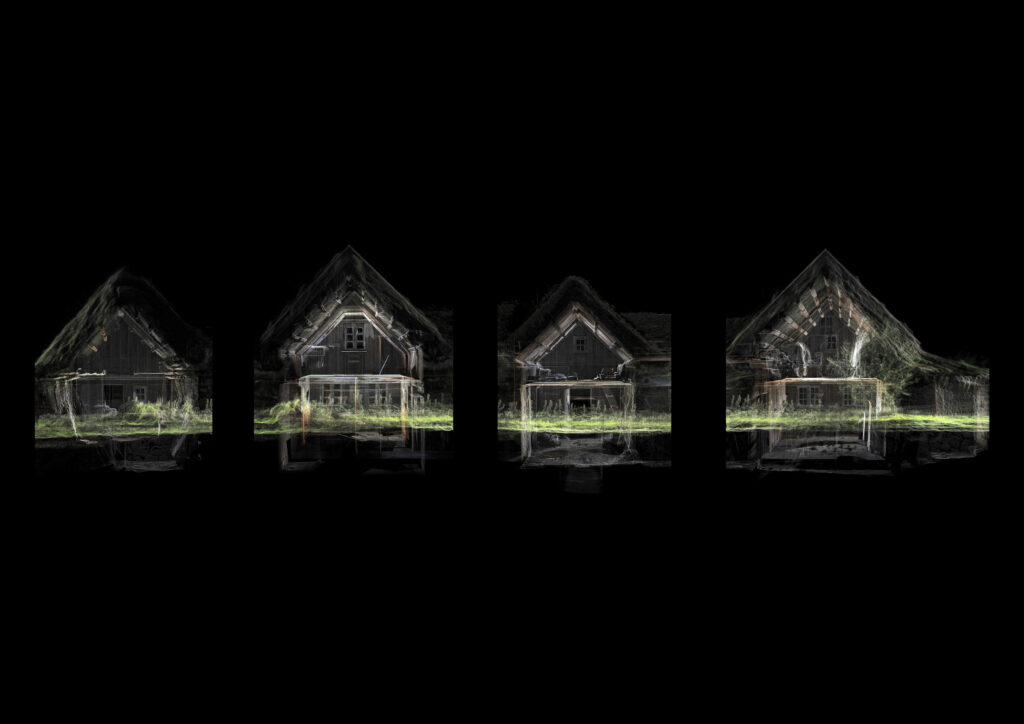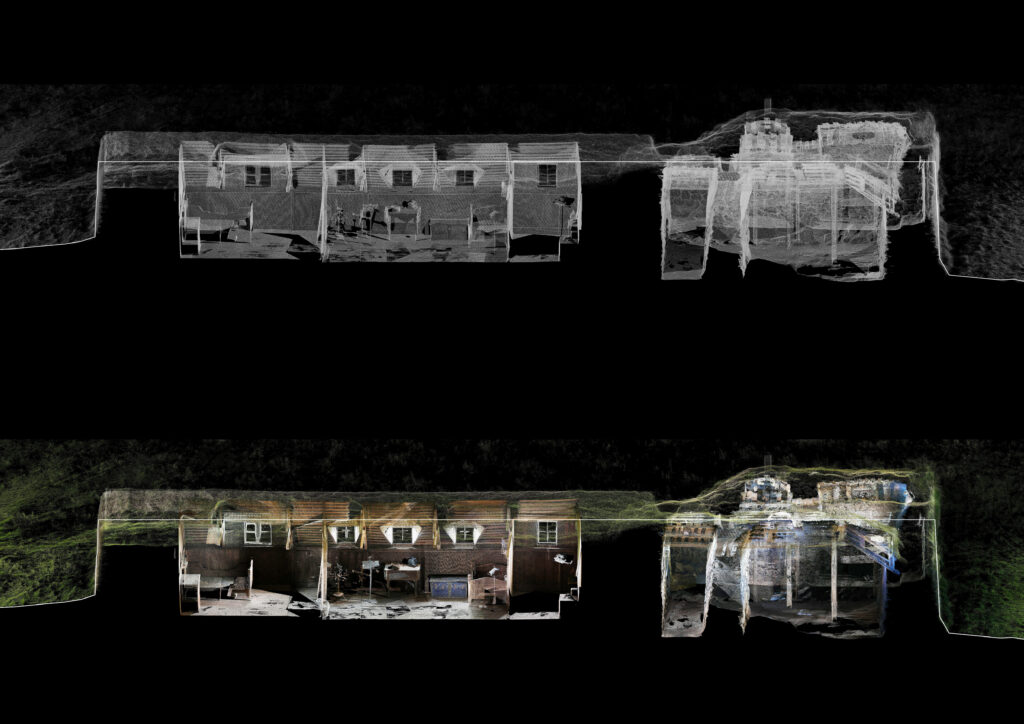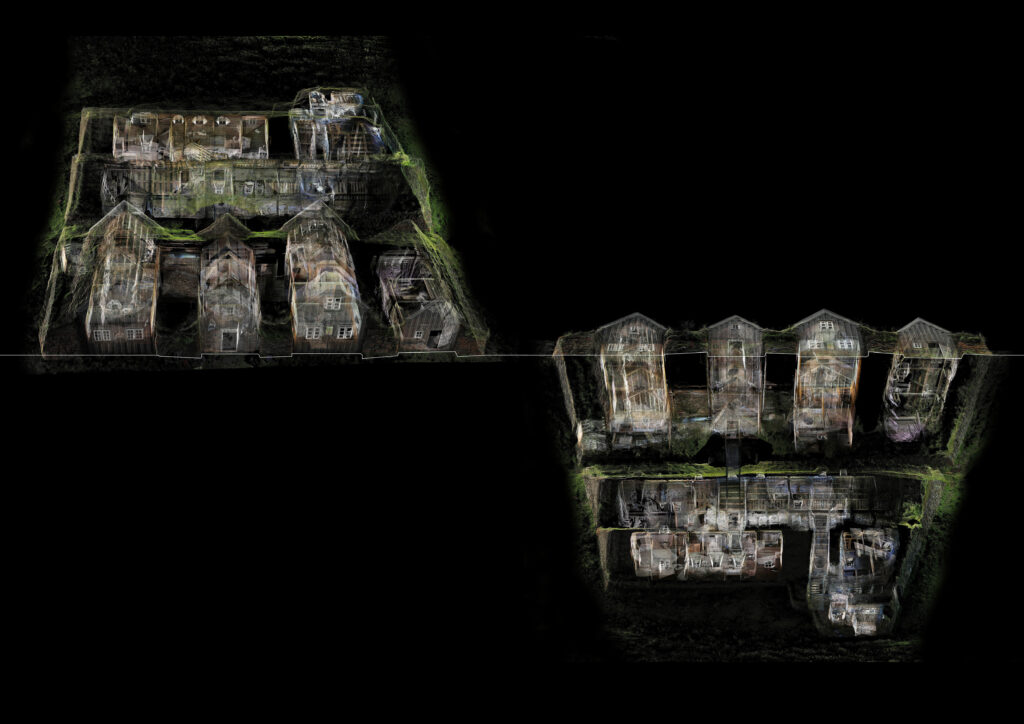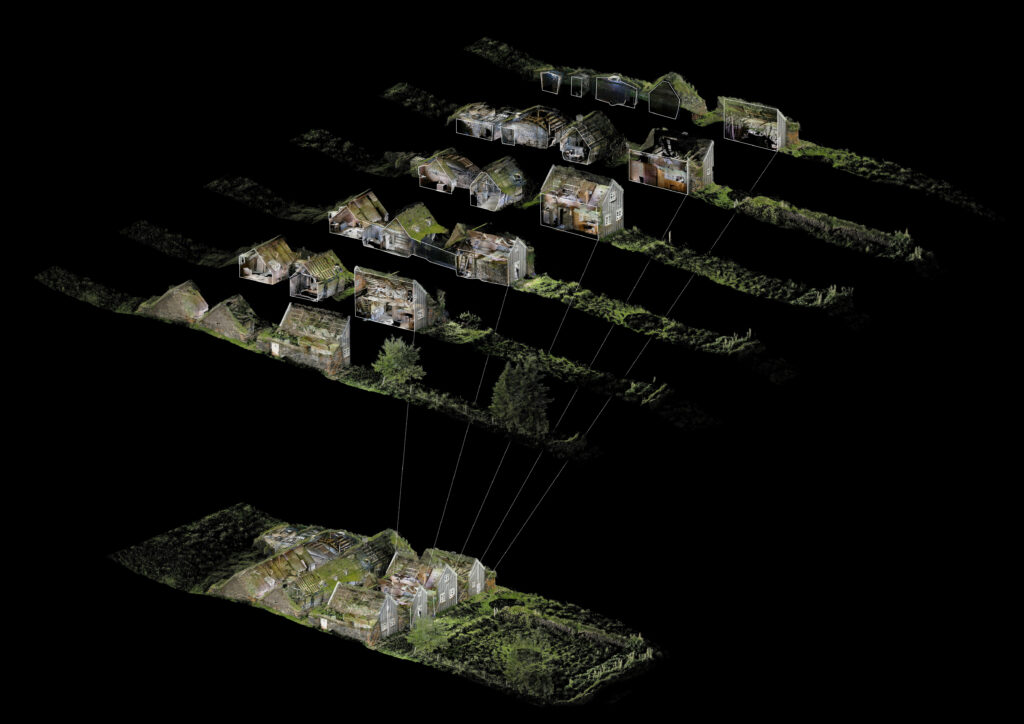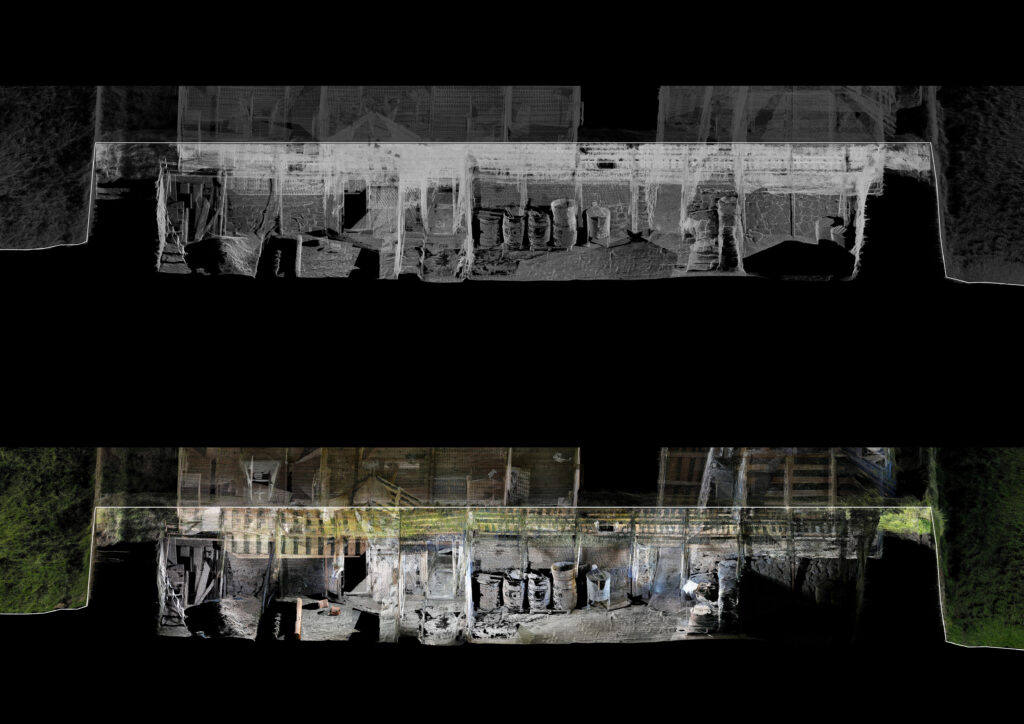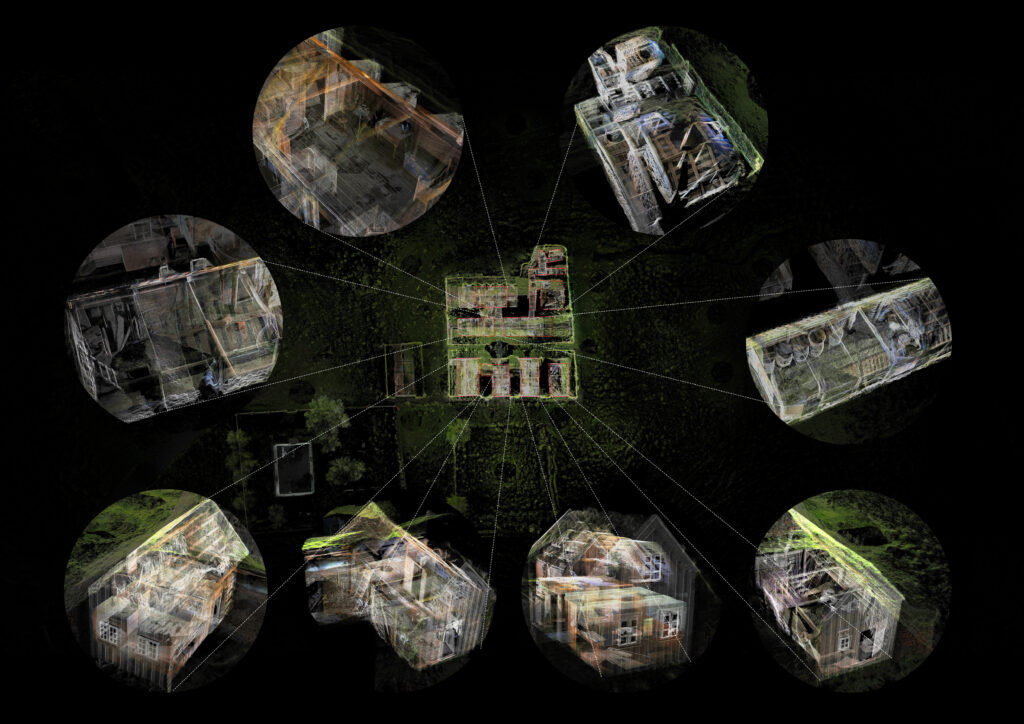Pia Fricker
The Unexpected View — from Datapoints to Immersive Experiences
76 scan positions, informed by curiosity to see and experience more…!
Point clouds are an increasingly important tool in a range of fields, including architecture and landscape architecture, due to their ability to provide accurate and detailed information about complex sites. Point clouds are generated by collecting data from various sources such as laser scanning, photogrammetry, and lidar, and processing this data to create a 3D model of the scanned object or landscape. The high precision and accuracy of point clouds make them useful for a range of applications such as evaluation, conservation, documentation, iterative performance studies, planning, and design (Urech et al. 2020). This very personal speculative research is driven by scientific curiosity, referring to the term “Cloudism”, understood as a technique that uses point clouds and algorithms to generate designs that are inspired by natural processes, such as erosion patterns (Girot 2019). This research involves creating immersive experiences that allow users to explore and interact with information in unexpected ways. The generated imagesare part of a storyline, which allows for a switch of perspective and roles to experience the hidden layers of a turf house through curated entry points. Each carefully generated image represents a frozen snapshot of an immersive experience that unveils typological rules of interaction across scale and time (Fricker 2022a). Besides the provided entry point for the immersive experience, the duration of interaction, and exit point are arbitrary, and the interaction creates an overlay of stories that can be revisited, adjusted, revised, or erased. Turfhouses, viewed as “living organisms”, have a unique typology fullof embedded knowledge (Carlsen 2022, Grétarsdóttir and Hafsteinsson 2020), offering possible solutions for rethinking the current trajectory towards the grand challenges imposed by climate change. The conceptual and practical development of hybrid point clouds, capable of connecting temporal, spatial, and speculative design data, requires a radical new composition of knowledge domains towards dynamic systems of interactions (Fricker 2022b). This synergetic discourse between science and design enables transversal interactions between the actors in our environments, and aims to create premises for a new model of environmentally responsible action across disciplinary barriers (Stritih, Bebi, and Grêt-Regamey 2019).
Images: Pia Fricker & Yao Chaowen – Aalto University
References
Carlsen, A. (2022). Turf Houses in Iceland — a Disappearing Cultural Heritage. Royal Danish Academy. https://royaldanishacademy.com/project/turf-houses-iceland-disappearing-cultural-heritage
Fricker, P. (2022a). Augmented Co-Design Methods for Climate Smart Environments: A Critical Discourse and Historical Reflection. In F. M. Ugliotti & A. Osello (Eds.), Advances in Human and Social Aspects of Technology (p. 156–83). IGI Global. https://doi.org/10.4018/978-1-6684-4854-0.ch008
Fricker, P. (2022b). Computing with Nature: Digital Design Methodologies across Scales. In R. Monacella & B. Keane (Eds.), Designing Landscape Architectural Education: Studio Ecologies for Unpredictable Futures (p. 229-239). Routledge. .https://doi.org/10.4324/9781003145905-25
Grétarsdóttir, T. & Hafsteinsson S. B. (2020). Pulses of Future Architecture. Tera 1: 90-103.
Girot, C. (2019). ‘Cloudism’ Towards a New Culture of Making Landscapes. In E. Braae & H. Steiner (Eds.), Routledge Research Companion to Landscape Architecture (p. 113–24). Routledge.
Stritih, A. P. B., & Adrienne Grêt-Regamey. (2019). Quantifying Uncertainties in Earth Observation-Based Ecosystem Service Assessments. Environmental Modelling & Software 111, 300- 310. https://doi.org/10.1016/j.envsoft.2018.09.005.
Urech, P. R.W., Dissegna, M.A. Girot, C. & Grêt-Regamey, A. (2020). Point Cloud Modeling as a Bridge between Landscape Design and Planning. Landscape and Urban Planning 203, 103903. https://doi.org/10.1016/j.landurbplan.2020.103903.
